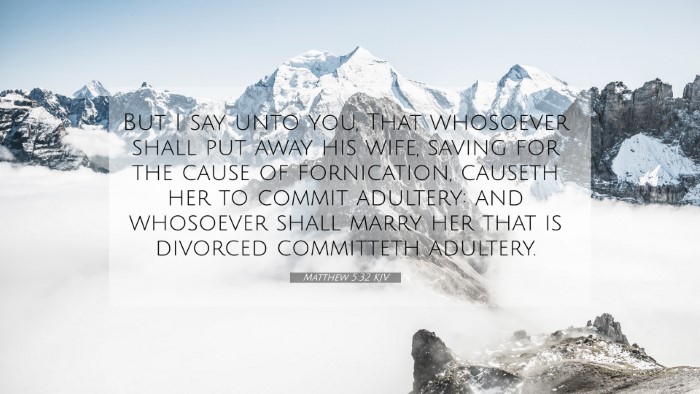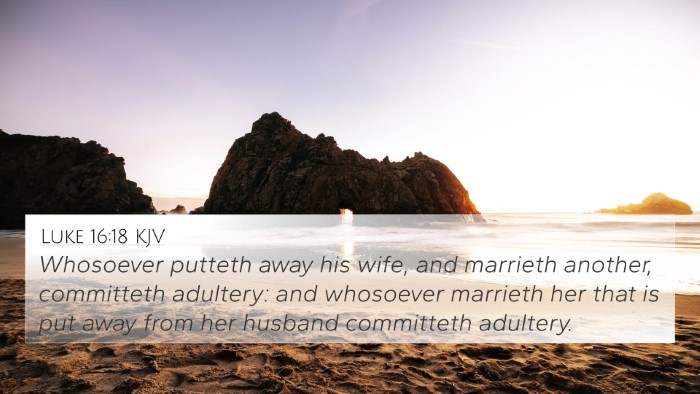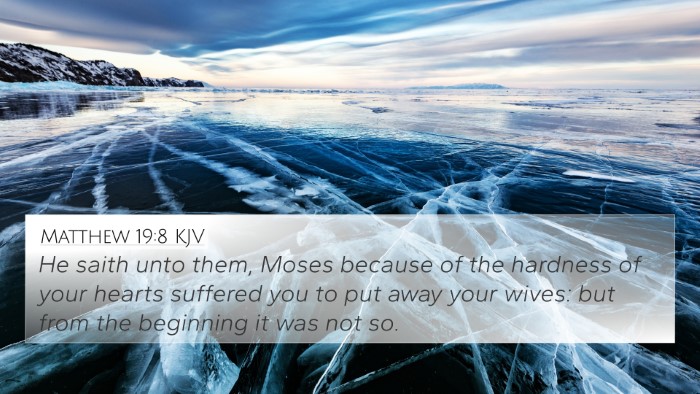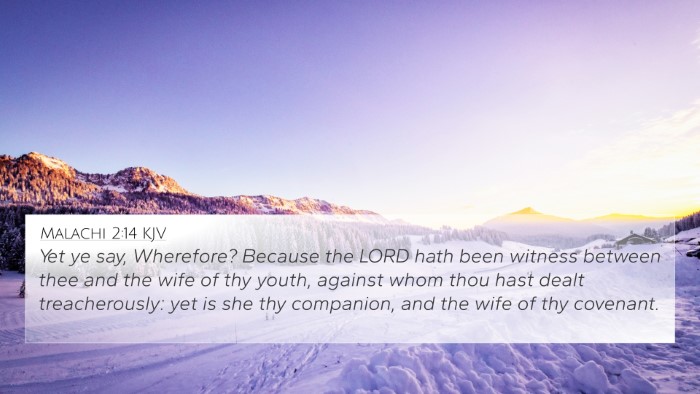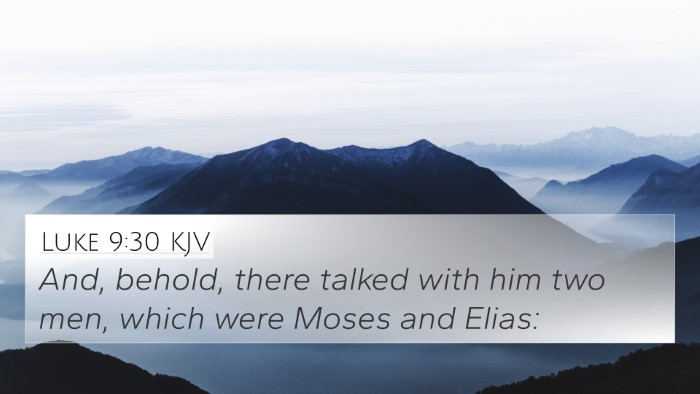Understanding Matthew 5:32
In Matthew 5:32, Jesus addresses the serious topic of divorce and remarriage, stating,
"But I say unto you, That whosoever shall put away his wife, except for the cause of
fornication, causeth her to commit adultery: and whosoever shall marry her that is divorced
committeth adultery."
This verse carries profound meanings, reflecting the sanctity of marriage and the consequences of infidelity.
Summary of Insights
-
Divine Intention for Marriage:
Commentators emphasize that Jesus illustrates God's original design for marriage as a
sacred covenant. Matthew Henry notes that the act of divorce undermines this divine intention,
serving as a reminder of the seriousness of marital bonds.
-
Exceptions and Clarifications:
Jesus mentions an exception for "fornication," which signifies sexual immorality.
Albert Barnes clarifies that this exception does not promote divorce but acknowledges human
failings and moral failings within the marital relationship.
-
Consequences of Divorce:
The verse outlines that permitting a divorce leads to further sin, particularly for the divorced woman
who may remarry. Adam Clarke discusses how Jesus aims to prevent not only the act of divorce but the
subsequent actions that stem from it, emphasizing the weight of responsibility held by those who
initiate divorce.
Analytical Perspective
This verse can be explored through various Bible cross-references that highlight similar themes and teachings.
Here are notable connections:
- Matthew 19:9: Jesus reiterates the implications of divorce.
- Mark 10:11-12: The Gospel of Mark presents a parallel teaching on the permanence of marriage.
- Luke 16:18: A similar passage admonishing against divorce and remarriage.
- 1 Corinthians 7:10-11: Paul addresses marital issues, echoing Jesus' teachings on divorce.
- Malachi 2:16: Highlights God's disdain for divorce.
- Ephesians 5:31: Discusses the profound connection between husband and wife.
- Proverbs 2:16-17: Warns against the dangers of infidelity, linking to the consequences outlined in Matthew.
Thematic Connections
When considering the connections between Bible verses, Matthew 5:32 serves as a vital part of the
overarching narrative about fidelity and the importance of maintaining marriage vows. The insights gathered from
public domain commentaries reinforce these meaningful discussions. Below are some methods for using Bible cross-references:
-
Identifying Relationships:
Use a Bible concordance to find verses that share similar themes.
Cross-reference tools can help in identifying critical connections throughout Scripture.
-
Contextual Analysis:
Engage in detailed cross-referencing between Gospels to grasp the full context of Jesus' teachings.
Pay attention to how different authors depict the same events, enhancing understanding of the message.
Conclusion
Matthew 5:32 serves as a pivotal scripture in understanding the teachings of Jesus regarding marriage and divorce.
Through cross-referencing with other passages, believers can gain a more comprehensive perspective on the
sanctity of marital relationships and the serious implications of divorce. It is crucial to use tools for
Bible cross-referencing to examine these themes deeply, thereby enriching one’s spiritual understanding and
practical application of Biblical principles in life.


